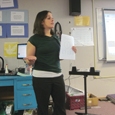Many music educators, especially those with traditional, ensemble-based classrooms, find it challenging to incorporate a diverse music curriculum into their current routine. The demands of upcoming performances make rehearsal time precious, and it may seem daunting to include additional material.
However, music educators are responsible for providing students a rich and diverse music experience, whether they teach symphonic orchestra or music appreciation. When I first considered exploring other types of classroom activities, I struggled with the idea of sacrificing much-needed podium time with my middle school band and orchestra. However, with a bit of adjustment, I was able to add a music composition unit in the weeks following a spring performance. This gave students a creative outlet during the final weeks of the year, when frequently it is difficult to maintain focus.
I have also found it useful to reframe a larger topic into smaller segments that can be taught concurrently with routine ensemble goals. Tackling a specific music theory unit over a series of Wednesdays, for example, can ensure the music class continues to prepare for a performance.
The following lessons outline a sample of how a unit focusing on popular music can easily be integrated into the curriculum. I have found that middle school students are particularly interested in this topic, as they are developing their personal music tastes. However, this unit could be used at many different grade levels.
Each of these activities took approximately 20-25 minutes of class time to complete with my middle school students. For teachers with shorter class periods or larger class sizes, one activity might be appropriate per class period. Those teachers with longer class periods or smaller class sizes might do more than one activity or use the other portion of class for rehearsal.
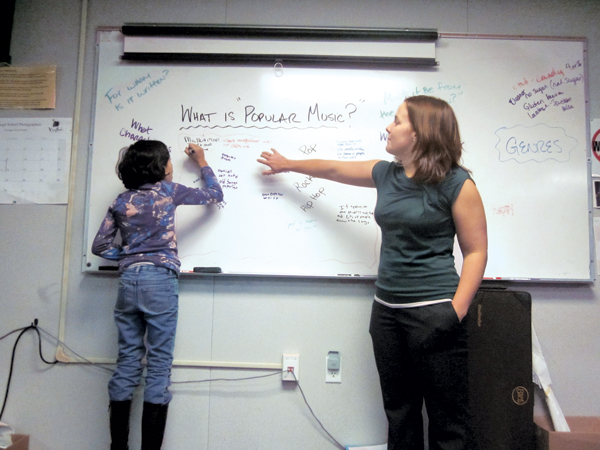
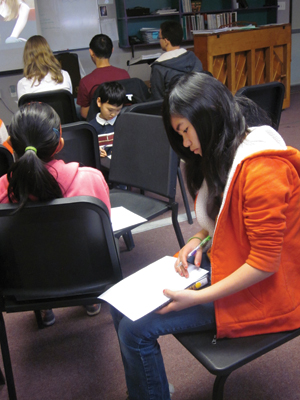 Activity A: What is popular music?
Activity A: What is popular music?
On a sheet of paper, have students independently answer questions such as: What is popular music? Who creates popular music? For whom is popular music written? Does popular music need to be from now, or could it be from another time? Is the music you like now going to be considered popular music in ten years? What isn’t popular music, and why? After students have written responses, engage the class in a group discussion about their opinions, and record key words and ideas on the board. As a group, develop a working definition for popular music that is agreeable to the class. Post the definition in the classroom to help guide students throughout the unit.
Materials: Notebook paper, pencil, dry erase board and marker.
Activity B: What types of popular music exist?
Ask the class to come up with genres of popular music, and record them on the board. Ideas might include such genres as rock, hip-hop, or techno. Then select five or six genres from the list. Divide the class into groups, and assign each group a style. On a piece of poster paper, each group creates a visual representation of that genre, illustrating their ideas of what instruments it uses, what words might be associated with it, and so on. For example, a group exploring heavy metal might draw electric guitars, a drum set, and a giant amplifier, and they might include words such as loud and intense. Students might also include names of groups they feel are representative of the genre they are depicting. After creating their posters, each group shares their ideas with the class. Another discussion topic might cover stereotypes associated with different genres of music, considering why they might exist.
Materials: Poster paper, markers, dry erase board and marker.
Activity C: What similarities and differences exist across various popular music genres?
Frequently, students have strong beliefs about what types of music they prefer and why. This activity is designed to help students better describe what precisely it is they appreciate about a certain music genre, while also helping them consider how that genre might be similar to another in ways they may not have realized. Distribute two to three Venn diagram sheets (sample below) to students. Pre-select four to six music videos that are around three minutes each. (Be sure to pre-screen for lyric and visual content.)
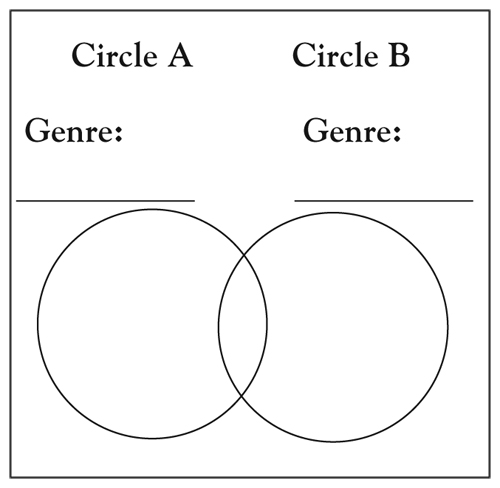
Students watch the first video, try to identify the genre of music, and record it on the A side of a Venn diagram sheet in the space provided. As they watch, students will fill in Circle A of the Venn diagram with words describing what they see and hear. They must come up with a total of six descriptive words. Students may use up to four of those words from a provided word bank (example below), but at least two should be created independently. These words should describe the music and imagery and not reflect students’ opinions of the style.
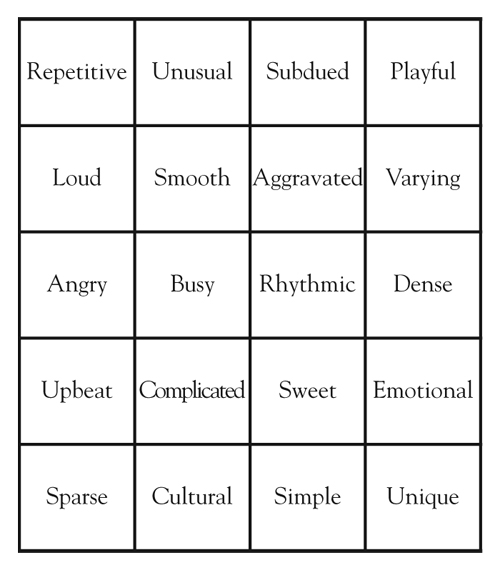
Next, students will watch a second video. They will similarly identify the musical genre and complete Circle B of the Venn diagram. Once this is finished, they should see if any of the words they chose occur in both Circle A and Circle B. If there are any repeats, those words should be written into the center of the Venn diagram. Engage in a brief class discussion about the similarities and differences between the two pieces of music and respective videos. Repeat this activity as desired, using videos representing different music genres.
Materials: Laptop, projector, speakers, YouTube, Venn diagram worksheet (pdf available at www.theinstrumentalist.
com), descriptive word bank.
Activity D: How are popular music songs structured?
This activity explores how elements like verses, choruses, and bridges can work together to create the structure of many different popular music songs, regardless of genre. Engage in a brief, basic instructional segment discussing the difference between a verse (tells the story), chorus (the theme of the story), and a bridge (develops the main idea).
Next, select a song (preferably one that is familiar to the students) with distinct verse, chorus, and bridge sections. (Katy Perry’s Firework worked well for our first try at this activity.) Provide each student with a copy of the song’s lyrics so they can follow along as you play the music. Talk them through how each segment sounds slightly different from one another. Aural cues can be used to help identify when the chorus returns, another verse happens, or the bridge repeats itself. It can be helpful to have student volunteers stand at the front of the room and hold up signs that read verse, chorus, or bridge when the corresponding section is playing.
Once the song is complete, you could listen a second time without looking at the lyrics sheet to see if students can identify the sections simply by listening. Students might even like to get active, by showing jazz hands for the verses or throwing their hands up in the air during the choruses. Repeat this activity songs in different musical genres. By the last song or two, do not hand the students a lyric sheet. See if they can identify the song structure solely by aural cues on the first listen.
Materials: Song lyrics, mp3 player, speakers, song section signs.
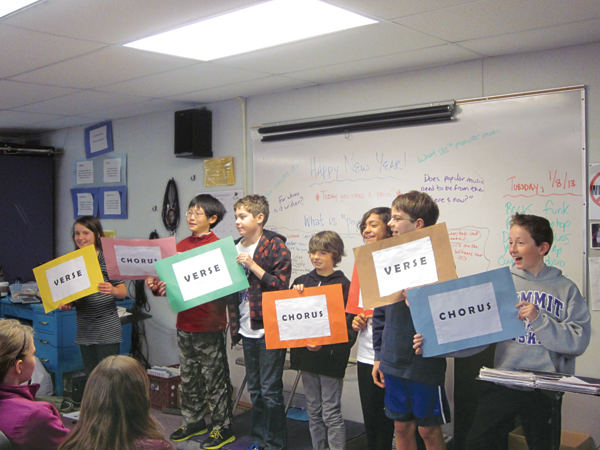
These are just some activities to help implement popular music into the curriculum. Other activities worth exploring include lyric projects (students create an original verse to their favorite song), guest artists (local popular music artists present their work and answer student questions), or even original popular music composition. Of course, a performance of high-quality arrangements of popular music is a great approach, as well.
Adapt this strategy to break other music topics into manageable and interesting units. Teaching students about many aspects of music adds tremendous value and depth to their education and may reignite their interest in music.
